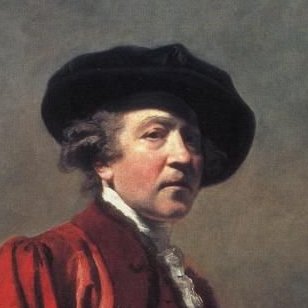England. British art boasts a rich tapestry of styles and themes throughout its long history. Medieval art, from the 5th to the 15th century, was dominated by religious themes. Art served to glorify God and educate the largely illiterate population. Illuminated manuscripts, stained glass windows, and frescoes adorned churches and monasteries. In the 16th century the Tudors embraced the Renaissance ideals of humanism and realism. Portraits became increasingly prominent, celebrating royalty and nobility. In the 17th century the Stuarts continued the tradition of portraiture, with artists like Van Dyck influencing British styles. Starting in the 18th century, the Georgian era saw a rise in neoclassicism, with artists like Joshua Reynolds and Thomas Gainsborough creating grand portraits and historical scenes inspired by Greek and Roman art. At the end of the 18th century a reaction to the constraints of neoclassicism, Romanticism, emphasized emotion, imagination, and the natural world. Artists like J.M.W. Turner and John Constable captured the drama and beauty of landscapes. In the 19th century the Victorians embraced social and industrial progress, reflected in art that depicted historical events, scientific discoveries, and moral narratives. Pre-Raphaelitism, a movement that sought to revive the detail and religious devotion of early Renaissance art, also emerged during this period. The 20th and 21st centuries witnessed a vast array of styles and movements in British art, from the experimentation of abstract art and surrealism to the social and political commentary of pop art and street art. Artists like Damien Hirst and Banksy challenge and redefine the boundaries of art. After the fall of the Roman Empire, English art was heavily influenced by Celtic and Anglo-Saxon traditions, as well as by the Christian religion. Medieval English art is characterized by its ornate decoration, intricate patterns, and religious themes, as seen in illuminated manuscripts such as the Lindisfarne Gospels and the Book of Kells. During the Renaissance, English art was influenced by the artistic movements of Italy and Northern Europe, as well as by the humanist ideas of the time. English artists such as Hans Holbein the Younger and Nicholas Hilliard produced portraits and miniatures that reflected the growing interest in individualism and the natural world. The 17th and 18th centuries saw the rise of the British Empire and the development of a distinctly English artistic tradition. Artists such as Joshua Reynolds and Thomas Gainsborough produced elegant portraits of the aristocracy, while landscape painters such as J.M.W. Turner and John Constable captured the beauty and drama of the English countryside. In the 19th century, English art was influenced by the social and political upheavals of the Industrial Revolution. The Pre-Raphaelite Brotherhood, a group of artists that included Dante Gabriel Rossetti and John Everett Millais, sought to challenge the dominant artistic styles of the time and return to the simplicity and purity of early Renaissance art. The Arts and Crafts movement, led by figures such as William Morris and John Ruskin, emphasized the importance of traditional craftsmanship and the use of natural materials. In the 20th century, English art was shaped by the upheavals of war, the rise of modernism, and the influence of international artistic movements. Artists such as Henry Moore and Barbara Hepworth produced abstract sculptures that reflected the influence of European modernism, while the Young British Artists of the 1990s, including Damien Hirst and Tracey Emin, challenged traditional notions of art and provoked controversy with their provocative installations and performances. English art has had a significant influence on the art of other places around the world.
more...





